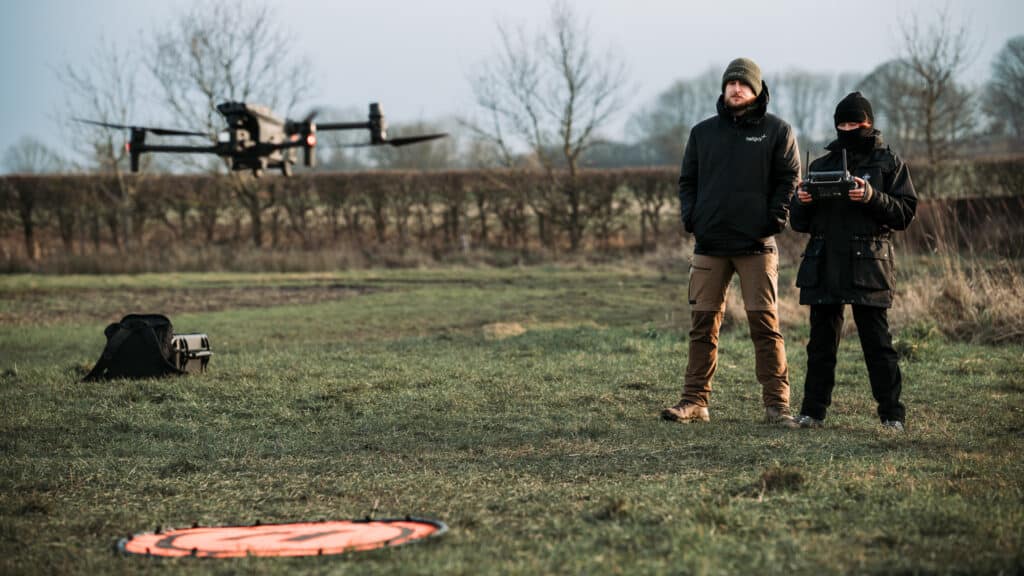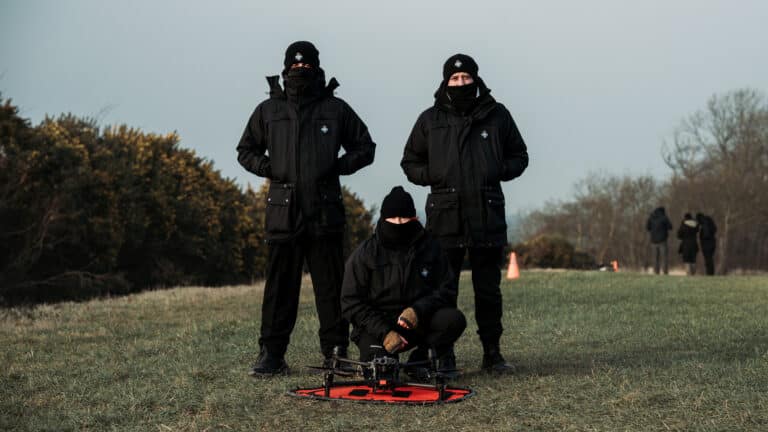Drugs, weapons, and even mustard. That’s just some of the contraband smuggled into British prisons via drones and the problem is getting worse.
Things are getting so bad that a watchdog has warned that two major prisons had “ceded control” of the air above them to drones operated by gangs, amid fears they could even help dangerous criminals – including terrorists – escape.
But prison staff in the North East have turned to drone specialist heliguy for training, support, and hardware of their own in order to tackle the flying threat.
Jack Sharp, the North Shields firm’s head of training, has been working with guards and management at prisons to ensure they are ready to deal with whatever buzzes their way.
“The threat drones pose to prisons is unprecedented, and at heliguy, we are noticing a definite upsurge in interest from the prison sector for help in keeping their establishments safe,” he said. “A big focus is on general visual line of sight training, which provides a thorough overview of the rules, regs and operational procedures needed along with more advanced flying skills to safely and successfully operate the drone.
“The feedback we receive is superb, and prisons are becoming aware of just how vital it is to have skilled drone operators in their security team.”
Exclusive behind-the-scenes pictures shows how heliguy have been training one North East prison – HMP Holme House – to best utilise drones as part pf their security setup.



It comes as Government figures show that illegal drone use around prisons has soared in the past decade. There’s been a ten-fold increase in drone incursions during that time, according to the latest Ministry of Justice data.
Additionally, a recent Her Majesty’s Inspectorate of Prisons report revealed that one major high-security prison in Lancashire – HMP Garth – has “become like an airport” due to the number of drone drug drops.
READ MORE: More cast join Baby Reindeer creator Richard Gadd and Billy Elliot’s Jamie Bell in new BBC and HBO co-production
“Drones are being used by criminals outside the prison walls to smuggle goods into prisons, but what often never gets enough focus is how they have become a crucial first line of defence for prisons,” added Sharp.
“They’ve revolutionised perimeter security, especially at larger prisons. A drone can’t really stop another UAV from delivering drugs, but what it is brilliant at is detecting a package before a prisoner does – and keeping the contraband outside the prison wall.
“As a surveillance tool, it is exceptional and can offer round-the-clock coverage and rapid response to help with real-time decision making – and providing invaluable evidence in the aftermath.”
According to Jack, prisons generally tend to be trained using two state-of-the-art drones engineered with the security sector firmly in mind. Both the DJI M30T and Mavic 3 Thermal can carry out highly-detailed aerial inspections – making them ideal for prison patrols and general surveillance – while their thermal capabilities offer round-the-clock protection.
The M30T is rapid – reaching top speeds of 83km – meaning it can rapidly reach a potential package to help intercept it, while the Mavic 3 Thermal’s 56x hybrid zoom enables staff to detect small items in great detail – even from distance. Both drones can also stay airborne for over 40 minutes which helps prisons maintain a strong aerial presence.
And prisons may increasingly need to fight fire with fire by using drones as a deterrent, given growing concerns that traditional anti-drone technology is falling short – in early 2025, Charlie Taylor, the chief inspector of prisons, warned basic anti-drone measures like netting and CCTV were no longer cutting it, making it easier for drones to infiltrate prison security.
However, drone technology is advancing at a staggering rate while fast-changing rules are making it easier for prison management to embrace it. Recently, heliguy was awarded approval to fly drones beyond the visual line of sight (BVLOS) in an atypical air environment. The decision, a UK-first, represents the regulator’s most relaxed approval to date for autonomous flights.
Effectively, it means drones can be piloted remotely without the pilot actually being on-site. No longer do they even need to be able to see the drone with their own eyes, meaning flights can be operated away from the prison. The breakthrough was so significant that it made national headlines, while for prisons, the potential benefits are immense.
“The CAA themselves likened it to having a flying guard dog, and they are not wrong,” added Sharp. “Combined with the right hardware, such as the DJI Dock 2 – also known as the drone-in-a-box – it could transform prison security as the drone handling would effectively be outsourced away from the site which would free up already overstretched staff to look after the sites themselves.
“The drone can be airborne on-command in mere seconds, leading to quicker response times. This can be a genuine difference maker between a package being intercepted, or the contents getting inside a jail.”
Additionally, tougher laws were launched in January 2025 to try and crackdown on prison drone incursions. Anybody now caught flying a drone within 400m of a prison faces arrest and a maximum of ten years behind bars, a significant step-up from the previous guidance which said police could only act when there was evidence they were dropping contraband.
Yet criminals are still willing to take that risk as smuggled goods skyrocket in value once they are behind bars. Previous Cambridge University research found a bag of heroin can surge in value by 400 per cent compared to its street value.
“Drones are a problem for prisons, but they are also increasingly becoming a bigger solution,” concluded Sharp. “Technology and training is advancing by the year, and there’s good reason why so many prisons are now coming to heliguy to get it.”












